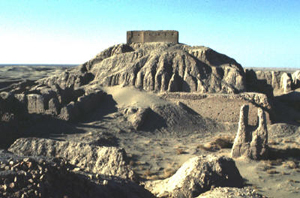
The University of Pennsylvania Museum has a long history of field work in the Middle East, beginning with the late 19th century excavations at Nippur, early Mesopotamia’s pre-eminent religious center. Nippur is located approximately 100 miles south of Baghdad, and the mound there is 60 ft. high and nearly a mile in length. The Museum's excavations at Nippur were the first American archaeological project in that part of the world.
One of the largest and longest-lived cities in Mesopotamia, Nippur was occupied before the 6th millennium BCE and habitation continued until about A.D. 800. The site functioned as a pilgrimage center, with building programs sponsored by the Babylonian and Assyrian kings, among others. Thousands of clay tablets in Sumerian and Akkadian have also been found there, including sections of the Epic of Gilgamesh and stories of the creation of mankind. The University Museum first excavated Nippur from 1888 to 1900, and co-sponsored later excavations there with the Oriental Institute, Chicago, from 1949 to 1951.
The University Museum houses about half the material excavated at Nippur in the late 19th century, probably the largest such collection in the world and certainly the largest in the United States. The collection contains approximately 5,200 pieces, including pottery and glass vessels; metal weapons and jewelry; stone beads, cylinder seals and weights; and clay plaques, loom weights, and cuneiform tablets. The seven Nippur coffins in the Museum's collection illustrate changing burial practices both at the site and more generally in southern Mesopotamia over a period of about 1000 years.
